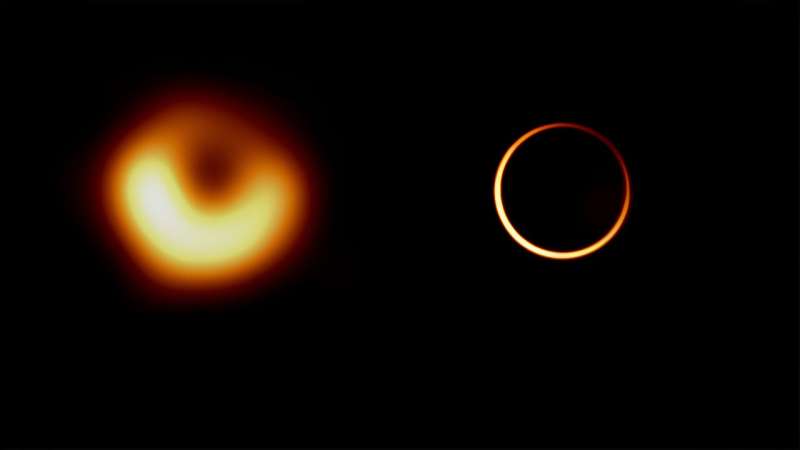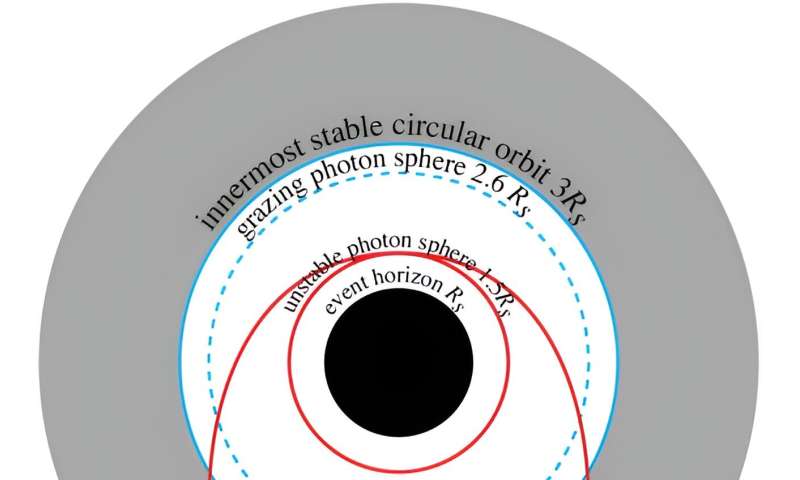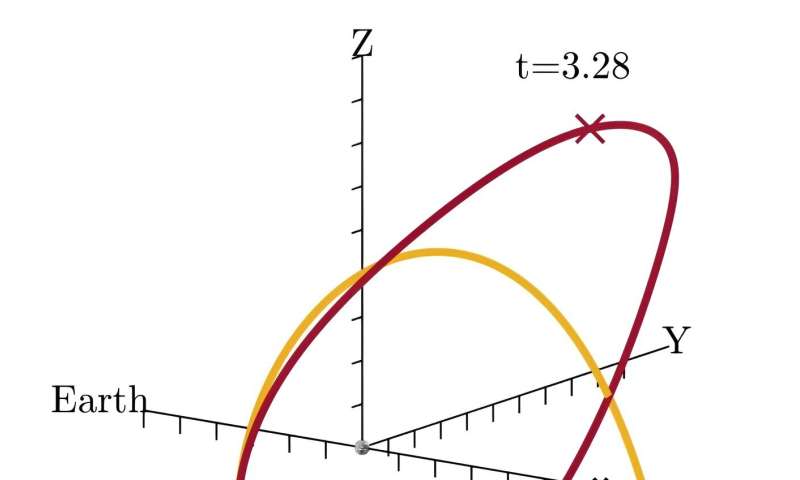This article has been reviewed according to Science X's editorial process and policies. Editors have highlighted the following attributes while ensuring the content's credibility:
fact-checked
peer-reviewed publication
trusted source
proofread
Here's what it would take to see a black hole's photon ring

Supermassive black holes are elusive creatures. Massive gravitational beasts that can power immensely bright quasars, or can lurk quietly among the bright stars of a galactic core. We mostly study them indirectly through their bright accretion disks or powerful jets of plasma they create, but we have been able to observe them more directly, such as our images of M87* and Sag A*.
But what still eludes us is capturing a direct image of the enigmatic photon ring. A new work published in Acta Astronautica proposes how this might be done.
Black holes are nothing more and nothing less than a warped structure of space and time. They are defined by the presence of an event horizon, which is a closed surface boundary through which light can cross only once. It is the point of no return. Anything that crosses the event horizon of a black hole is forever held in its gravitational trap.
But there are other defining structures near a black hole, such as the photon shell. This is the inner limit of stable circular orbits for photons. In theory, light in the photon shell can orbit the black hole forever, though, in reality, small gravitational fluctuations would make the orbits unstable over time. If the event horizon has a radius of R, then the photon shell has a radius of 1.5R.
We can't observe the event horizon or the photon shell directly, but the next closest feature we can observe. Known as the photon ring, it is the thin circle of light caused by photons that have grazed the black hole so closely their paths are deflected directly toward us. For a simple black hole, the photon ring has a radius of about 2.6R.
For a real, rotating black hole things are a bit more complicated, since the spin of a black hole boosts a photon's energy in the direction of rotation, but in either case, the photon ring is the closest black hole structure we can observe from a distance. As such, it could tell us a great deal about black holes and whether Einstein's gravitational theory is accurate.
-

The structures of a simple black hole. Credit: John F. Lindner, The College of Wooster -

Proposed elliptical orbits for the VLBI. Credit: Hudson, et al
The photon ring of M87* is captured in the EHT images of the black hole we currently have, but it's not distinct. Some research has argued that we can pull out the photon ring data from the background, but this has been disputed. A major problem with capturing the photon ring is that the current is at its limit of resolution.
It took all we could do just to get the blurry images of M87* and Sag A* we have. There are plans to build a next-generation Event Horizon Telescope (ngEHT), with more observatories and more sensitive detectors, but even this might not be enough to see the photon ring.
So this new study proposes a constellation of space-based Very Long Baseline Interferometers (VLBI). Antennas could be placed in a wide Earth orbit, or orbit a the L2 Lagrange point between the Earth and the moon. Without the interference of Earth's atmosphere, the receivers of this constellation could capture radio light at shorter wavelengths than ground-based observatories.
By placing the antennas in elliptical orbits, the array could achieve an effective baseline much wider than the diameter of the Earth. Both of these features would allow astronomers to capture high-resolution images of both M87* and Sag A* and observe their photon rings. The proposed telescope would also be able to capture lower-resolution images of other supermassive black holes, such as the one in the Andromeda galaxy.
This study is a proof of concept. It will be decades before we can build such a telescope, and there are several engineering challenges that would need to be solved to achieve such a design. But these ideas are worth thinking about. The photon ring is a holy grail of black hole astronomy, and we will only capture it if we strive to reach further than we have so far.
More information: Ben Hudson et al, Orbital configurations of spaceborne interferometers for studying photon rings of supermassive black holes, Acta Astronautica (2023). DOI: 10.1016/j.actaastro.2023.09.035. On arXiv: DOI: 10.48550/arxiv.2309.17127
Journal information: Acta Astronautica , arXiv
Provided by Universe Today





















